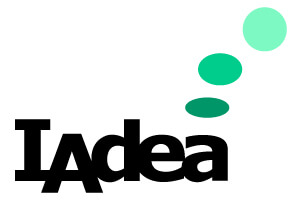In about a week, the first Workshop on Web-based Signage will take place near Tokyo, Japan. The event is hosted by the World Wide Web Consortium (W3C), the organization that has pushed forward many standards, including HTML5 and XML, that form the pillars beneath the Internet. This is the first digital signage-specific event organized by W3C and is backed by numerous world-leading corporations. IAdea is proud to be on the program committee of this event, and would like to offer you an overview and our opinion on its impact to the industry.
W3C describes the significance of the event on its web portal:
The Web is at a turning point with the emergence of the Open Web Platform, the set of technologies used to create highly interactive experiences and social apps on a broad range of devices. W3C has helped foster the deployment of Web technology on mobile devices and, for the past two years, has made the convergence of Web and TV a priority […]. We now see an opportunity to extend the Web to a new class of devices: very large digital displays, such as those found in New York’s Times Square or at many sporting events.
W3C is organizing a workshop to share perspectives, business use cases, and technology requirements so that the Open Web Platform can be used on digital displays – large and small.
IAdea believes of the roadblocks holding back the digital signage industry is the lack of a media standard. A common format for digital content would dramatically reduce the cost of content acquisition and transmission in digital signage. Content producers would enjoy the scale of economy and be able to sell contents to more users in a shorter time. A content standard is also likely to provide the foundation to increase digital signage advertising sales beyond its scale today. Industry organizations including POPAI offered their proposals a few years ago. Companies like IAdea also moved to adopt standards like SMIL and HTML5 which are gaining traction and growing in popularity. However the real industry giants have not thrown in their support until today.
In the workshop to take place on June 14-15, 2012, there will be no shortage of big IT companies with interests to expand their business in the digital signage market. Display companies already with a presence in the industry will be there, including NEC, Sony, Panasonic, Mitsubishi, Hitachi, and Fujifilm. Telecom technology companies who operate the backbone of the digital signage networks will also be present, including Cisco, Ericsson, NTT, KDDI, NHK. Other participants include Intel, Microsoft, Yahoo, Toshiba, and Canon. The weight carried by these participants easily makes this event one of the most significant milestones in the standardization process of the digital signage industry.
The event will be more than just handshakes among the participants. To participant in the event, each applicant is required to submit a Statement of Interest and contribute at one of seven presentation sessions planned for the two days. IAdea will be contribute its experience in shipping world’s first W3C-compliant digital signage products featuring SMIL and HTML5, both existing standards published by W3C, as well as IAdea’s recommendation for building the ultimate digital signage standard.
Two days will not be sufficient to fully define the future of the digital signage. However from the list of participants and the topics proposed for discussion, it leaves little doubt that standardization is the agreed way to carry the industry forward. If you would like to contribute to this effort by sharing your opinion, or would like to be informed of the result of this workshop, please leave your comments at the end of this article. IAdea looks forward to building a better digital signage industry with you.

